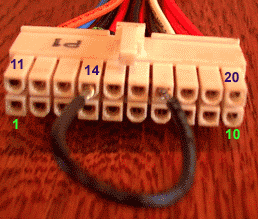- Joined
- Jan 15, 2002
- Location
- Colorado, USA
Well, it's supposed to be cold and nasty here this weekend, so I thought I would experiment with a radiator & fan/s setup.
SO I put my spare ATX power supply on the
workbench, and hooked up a 12 VDC fan. I turned on the main switch, then shorted pin 14 of the MoBo connector to GND, power supply didn't come on. I figured when you pressed the power switch on an ATX machine, the switch was just shorting pin 14 on the main power plug (labeled turn power supply turn) to GND. Obviously not.
So, I have two questions. Is it OK to run the ATX PSU with no load on the +5 VDC, - 5 VDC, and -12 VDC, and only a light load on +12 VDC?
If so, what do you have to do to get it turned on when the PSU is laying on the bench?
Pudge
SO I put my spare ATX power supply on the
workbench, and hooked up a 12 VDC fan. I turned on the main switch, then shorted pin 14 of the MoBo connector to GND, power supply didn't come on. I figured when you pressed the power switch on an ATX machine, the switch was just shorting pin 14 on the main power plug (labeled turn power supply turn) to GND. Obviously not.
So, I have two questions. Is it OK to run the ATX PSU with no load on the +5 VDC, - 5 VDC, and -12 VDC, and only a light load on +12 VDC?
If so, what do you have to do to get it turned on when the PSU is laying on the bench?
Pudge
